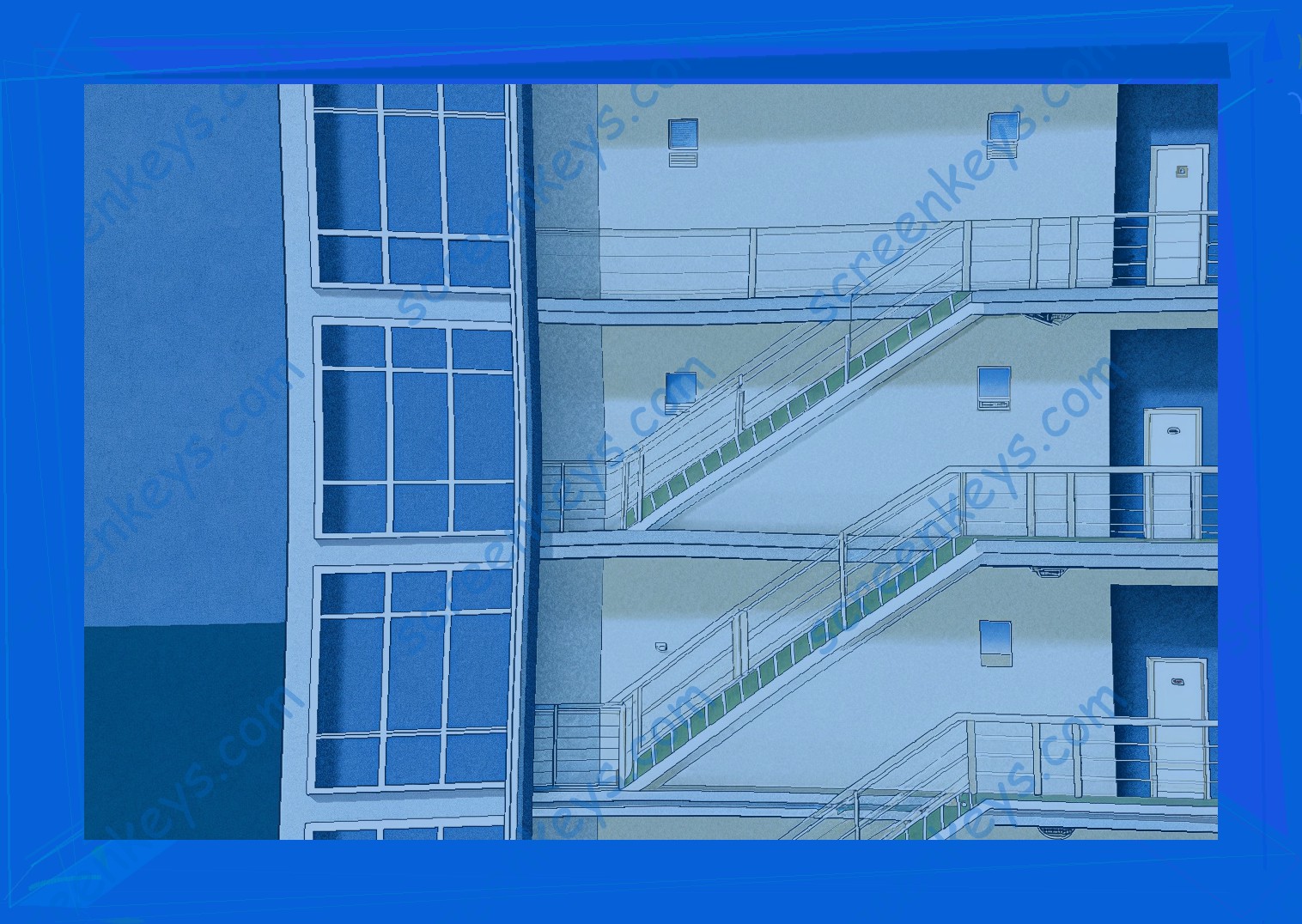Florida Building Code Egress Overview
Egress requirements, defined by the Florida Building Code, are the minimum amount of horizontal width and spacing (e.g., length and width) that exits must have so an occupant can exit a building. Egress requirements also include the necessary number of exits that a building must have to safely accommodate its expected population.
Egress is covered in Section 1013 of the Florida Building Code, Residential, and Section 1015 of the Florida Building Code, Building. Key requirements are highlighted below.
Every room and space in a residential building requires at least two doorways, or a doorway and an operable door, to the outside.
FBC, Residential, Section R311.2.1 provides:
For dwellings with an occupancy or multiple occupancies of more than two capabilities, unless separated by a fire wall, each capability shall be provided with one doorway or one sideswinging operable window leading directly to the exterior or to a roof outside the building.
Balconies require egress unless a door swings out into it.
FBC, Residential, Section R311.6 provides:
The code official may waive the requirement for a door from a habitable room to a required balcony where the building height does not exceed 40 feet (12 192 mm) and the depth of the balcony exceeds the minimum dimension of the doorway by 18 inches (457 mm) .
Common areas require two or more exits.
FBC, Building, Section 1015.1 provides:
All required and/or separate suites, tenant spaces, suites or areas (or spaces) within suites of a building shall have at least two means of egress. The means of egress shall be remote from each other, and for all stories above and below the level of exit discharge shall be on a separate story.
At least 50 percent of exits need access to interior corridors.
FBC, Building, Section 1015.1 provides:
Interior corridors serving the required means of egress shall provide access to at least 50 percent of the exits for the occupants of such corridor area at any point within such corridor area and for the specific use of such corridor area. This 50 percent access shall be in accordance with Section 7.2.4.1 of NFPA 101.
Exits must be remote from each other.
FBC, Building, Section 1015.5 provides:
Means of egress in other than residential buildings shall be separated from each other by construction as allowed in Table 1012.1.
I will tackle confusing issues within FBC, Residential and FBC, Building next week, when I will address common and accessible element requirements.
Main Aspects of Egress Requirements
A key aspect of life safety is egress. The ability to get out of a building in case of an emergency. Exit access, exit, and exit discharge are the three main components of egress as defined by the Florida Building Code (FBC). The components of egress form a continuous path from the point of origin of a fire, explosion, or other emergency, to a safe area outside the building. The FBC further imposes minimum requirements for the design of these components, which are based on occupancy, type of construction, and height of the building, among other factors. The requirements for doors, stairs, corridors, and ramps are detailed in the following sections of the FBC:
Doors
Section 1010 of the FBC describes the requirements for doors that are used for egress. These requirements can vary depending on whether the door is an interior, exterior, or common path of travel door, pocket or sliding door, or revolving door. All doors must also meet the requirements for special opening procedures and door operation.
Stairs
Sections 1011 through 1014 of the FBC detail the requirements for stairs used for exit access purposes. The requirements vary slightly based on whether the stairway in question is interior or exterior, however many remain constant regardless of the orientation.
Corridors
Chapter 10 of the FBC, which encompasses the requirements for egress components, also covers the requirements for corridors. Section 1015 covers requirements for corridors and Section 1016 addresses issues related to corridors in smoke compartments.
Ramps
Section 1012 of the FBC details the specifics of ramp design. The component requirements focus on the slope of the ramp, rise and run minimums, and other key ramp design elements.
Egress Doors and Accessibility Features
Adjacent to the required egress door must be a landing and the Florida Building Code also has requirements for the landing. Section 1005.1.3 of the Florida Building Code imposes the following requirements for the landing: In addition to these requirements for the landing, and as relevant to this post, egress doors must also be "integral to the wall or frame with hardware provided to retain the door in a closed position." Section 1005.1.3.1 describes how egress doors must be of the same dimension as a required egress door. Section 1005.1.3.2 describes how egress doors must comply with section 1010.1.1 of the Florida Building Code construing egress doors to comply with accessibility standards. Section 1005.1.3.3 requires required egress doors to be side-hinged construction. Section 1005.1.3.4 requires that egress doors must be of noncombustible materials or fire-retardant-treated wood, or solid-billeted or laminated-core wood in accordance with Chapter 3 of the Florida Building Code. Section 1005.1.3.5 requires egress doors to have a minimum 36 inch (914 mm) door width or 80 inch (2032 mm) door height. Section 1005.1.3.6 describes requirements for egress doors used by the public that must be power-operated. Section 1005.1.3.7 describes requirements for revolving or sliding egress doors (that may be used for egress). Finally, Section 1005.1.3.8 requires egress doors to be capable of being opened from the inside without a key, except when it is in a dwelling unit where the opening is from the sleeping room only.
Stairway and Stair Rail Regulation
The Florida Building Code specifies that commercial buildings require minimum stairway widths of 44 inches or more and a maximum slope of 50 degrees. Handrails must be a minimum of 1⅞ inches round or have equivalent graspability. Handrails must have a minimum height of 42 inches. Asisting handrails are required for both sides of the stair railing and must extend obsess steps at both the top and bottom. Intermediate handrails are also required when there is an open span that exceeds 30 inches.
For residential homes, stairways must "be designed such that a ball, having a diameter of 4 inches, cannot pass between the balusters." In other words, if the balusters are closer than four inches, someone cannot climb through or between them.
Emergency Exit Signs and Lighting Requirement
The Florida Building Code has numerous provisions that require exit signage and lighting to be provided within a building. Simply stated, the sign and lighting plan must provide continuous egress from any point of the building to a public way, which is defined as a street, alley, highway, public walkway, or private roadway. Not only are there State Building Code requirements, but the NFPA (National Fire Protection Association) has similar requirements as well. Each code will require that there are lighted exit signs that are clearly visible at all times and that they will remain powered at all times . They also require exit pathways that will provide illumination at all times in the event of a power outage or fire. The illumination will be powered by the main electrical supply as well as the emergency generator. It is worth noting that this is not limited to new construction and also applies to existing buildings. In some jurisdictions, they will consider whether the building was constructed within the last twenty years. However, the requirement to install exit lighting and signage can be triggered by a complaint regarding the means of egress.
Common Egress Regulatory Violations and Tips for Compliance
A. Common Violations
The most common violation of the egress requirements involve required vertical and horizontal clearances. Ceiling height is a common concern. A failure to adequately provide height above egress doors and from a stair landing or balcony to the finished floor, exposing workers to falling debris once doors are opened, could lead to serious injury. Additionally, doors may need to be self-closing, require a minimum clear opening width and/or need to swing in a particular direction, based on the height of the door. Engaging code consultants early on can ensure full compliance with height requirements by notification to the manufacturer of the required heights of the door units. There are special requirements for egress at stairs, balconies, ramps, landings, and platforms of certain dimensions which are commonly misunderstood or overlooked. For example, in wooden construction, the bottom wide step has to be the same material as the ramp surface leading into it, which provides a sure footing when entering or exiting. Steel constructed landings and entryways can be subject to spalling if light colored grits are not used in the casting process and open ended plates are not included in the design to absorb the water from the back side of the wall. Walkways or moving scaffolds may be used to provide horizontal egress from the top end of the walkway down to the exterior of the building. However, they may also be a source of electrical shock if not properly grounded, and they may be a cause of entrapment and danger to workers working above and below them if not properly secured.
B. Tips for Compliance
Service areas should be established within the building where supplies are stockpiled and then moved through the building to the egress pathways. Along with providing safety rails and barricades, all storage and equipment maintenance areas should be located in these service areas to avoid limiting the passage of other workers. Properly marked and identified steps, stairs, stair landings, and deadfalls, including sufficient vertical clearances and an appropriate number of exit routes should also be considered in advance.
Recent Egress Code Changes and Short Updates
A significant change made to the Code in 2018 was the reduction in the required number of exit doors in any room or area containing spaces where group assembly occurs. This Code requirement is now dictated entirely by the area of the space. For any space with an occupant load of 50 or more persons, the space must have two exits. For any space with an occupant load of more than 1,000 persons, the space must have 4 exits. Any space with an occupant load of 300 persons or less requires one exit. Spaces containing between 50 and 300 persons require either one or two exits, depending on the number of persons that will occupy the space. An assembly space can now be served by fewer exit doors, which will reduce construction costs to the builder or owner. For example, a space with an occupant load of 350 persons requires 2 exits and will require, at most, 4. A space with an occupant load of 450 persons requires 4 exits. As a general rule, each exit door will accommodate 150 persons, meaning each occupant would only have to travel, at most, 15 feet from their location to the nearest exit.—o—The 2020 Building Code added new requirements for patio and deck design to address ballasted pavers and the like. Many patio systems are constructed of pavers supported by a bed of washed and graded sand with an adequate drainage system to ensure no more than 90% of any individual stone retains moisture. In addition, the substrate sand material must be no more than 14mm in thickness. Substrate sand, and the sand that holds the stones in the patio in place, is vulnerable to weather conditions and can result in sinks if not properly installed. The new rules will encourage the use of pavers directly on the concrete for a patio instead of the ballasted systems used largely now. This will require the use of paver spacers and plastic spacers that must be installed or embedded into the top surface of the deck to provide sufficient spacing to avoid damage due to the expansion of the sand—o—There have also been changes to the Code regarding inspections for balcony or corridor components , including overhangs. All balcony overhangs and hung balconies are now required to be visually inspected after completion and prior to occupancy and at least every five years thereafter. Balcony overhangs and hung balconies must have an integrated flashing system with a water-stop flashing system. All descuborações and underdeck balconies are now required to be visually inspected after completion and prior to occupancy and at least every five years thereafter. The new Code has set 5 warranties that builders and contractors will need to consider when constructing a building in Florida. The warranties are:
• No person shall occupy the building or habitable space more than one year after issuance of the first certificate of occupancy or certificate of completion, whichever is applicable, until:
• Except as provided in Section 553.844(1), the building or structure after completion was, and for one year after completion remains, in compliance with the code under which the building or structure was permitted and designed, and the final inspection required by the code has been performed.
• The person certifies that he or she is the owner of the building or structure and authorized the issuance of the certificate, or was an authorized agent of the owner, if other than the owner, or the owner’s architect, contractor, engineer, or interior designer.
• The person certifies that all continuing contracts for construction and sales contracts for sale of individual units or parcels have been in compliance with provisions of this Former Florida Statute § 553.844.




